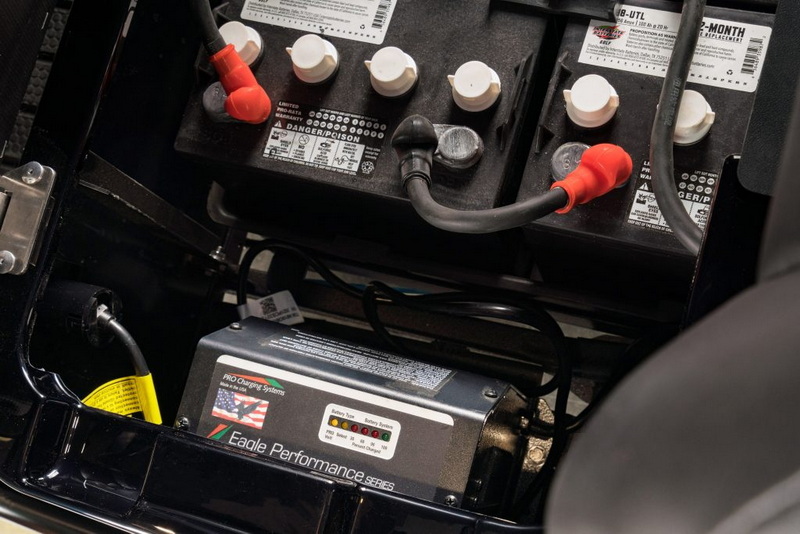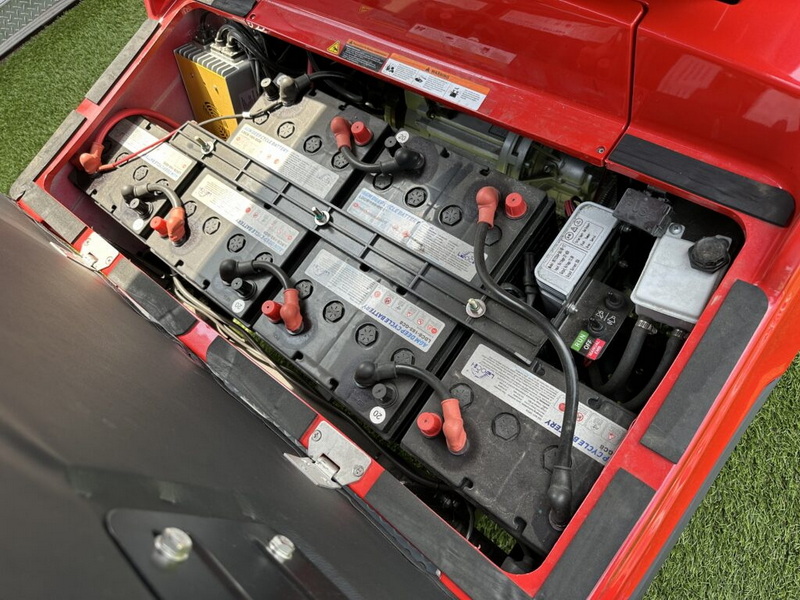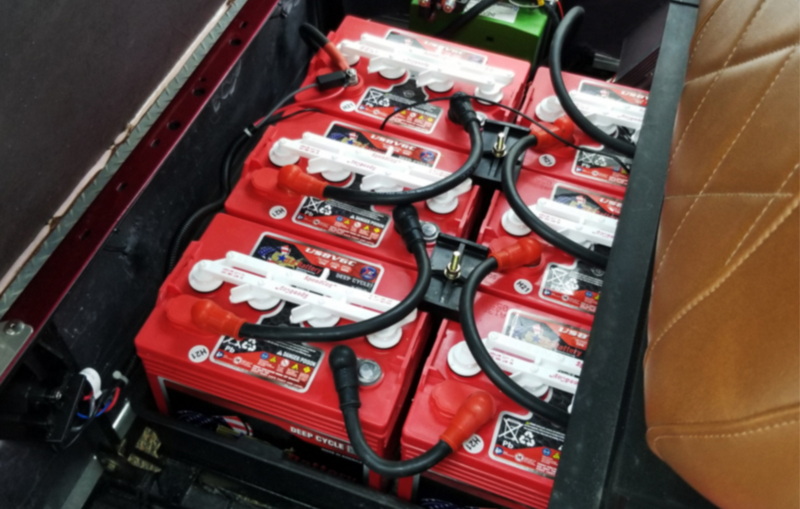Content Menu
● Understanding Golf Cart Batteries
● Tools Required for Battery Testing
● Step-by-Step Guide to Checking Golf Cart Batteries
>> Step 1: Safety First
>> Step 2: Visual Inspection
>> Step 3: Voltage Testing
>> Step 4: Load Testing
>> Step 5: Specific Gravity Testing (for Flooded Batteries)
>> Step 6: Professional Testing
● Common Battery Issues and Troubleshooting
● Maintenance Tips for Golf Cart Batteries
● Conclusion
● FAQs
>> 1. How often should I check my golf cart batteries?
>> 2. What should I do if my battery voltage is low?
>> 3. Can I replace just one battery in my golf cart?
>> 4. What are signs that my golf cart battery needs replacement?
>> 5. Is it safe to work on golf cart batteries?
Electric golf carts are a popular choice for leisurely rides on golf courses and in residential areas. However, like any battery-operated vehicle, the performance of your golf cart heavily relies on the health of its batteries. Regular checks are essential to ensure that your golf cart operates efficiently and reliably. This article will provide a comprehensive guide on how to check the batteries of your electric golf cart, including necessary tools, step-by-step procedures, maintenance tips, and troubleshooting common issues.

Understanding Golf Cart Batteries
Golf carts typically use multiple batteries connected in series to achieve the required voltage. The most common types of batteries used in golf carts are:
- Flooded Lead Acid Batteries: These require regular maintenance, such as watering and cleaning. They are the most common battery type due to their affordability and reliability.
- AGM (Absorbent Glass Mat) Batteries: These are sealed and maintenance-free but tend to be more expensive. They provide better performance in terms of discharge rates and have a longer lifespan compared to flooded batteries.
- Lithium-Ion Batteries: These offer longer life and faster charging times but come at a higher initial cost. They are becoming increasingly popular due to their lightweight nature and high efficiency.
Understanding the type of battery your golf cart uses is crucial for proper maintenance and testing. Each type has its own unique characteristics, charging requirements, and lifespan expectations.
Tools Required for Battery Testing
Before you begin testing your golf cart batteries, gather the following tools:
- Digital Multimeter: For measuring voltage accurately.
- Load Tester: To assess the battery's ability to deliver power under load conditions.
- Hydrometer: For checking the specific gravity of the electrolyte in flooded batteries.
- Battery Terminal Cleaning Brush: To clean corrosion from terminals effectively.
- Safety Gear: Gloves and goggles to protect against battery acid splashes.
Having the right tools ensures that you can perform thorough checks without causing damage to the batteries or yourself.

Step-by-Step Guide to Checking Golf Cart Batteries
Step 1: Safety First
Always prioritize safety when working with batteries. Ensure you wear protective gloves and goggles. Work in a well-ventilated area, and make sure the golf cart is turned off before beginning any tests. Disconnecting the battery cables can prevent accidental short circuits.
Step 2: Visual Inspection
Conduct a thorough visual inspection of the batteries:
- Look for any signs of damage, such as cracks or leaks. Any visible damage may indicate that it's time for a replacement.
- Check for corrosion around the terminals; this can prevent proper electrical connections. Corrosion appears as a white or greenish powdery substance.
- Ensure that all connections are tight and secure. Loose connections can lead to poor performance and overheating.
Step 3: Voltage Testing
To check the voltage of each battery:
1. Set your digital multimeter to the DC voltage setting.
2. Connect the positive probe to the positive terminal and the negative probe to the negative terminal of each battery.
3. Record the voltage readings. A fully charged 6V battery should read between 6.3V and 6.5V, while an 8V battery should read between 8.3V and 8.5V.
4. If any battery reads below these levels, it may need recharging or replacement.
Step 4: Load Testing
Voltage alone does not provide a complete picture of battery health; hence, performing a load test is essential:
1. Connect a load tester to the battery terminals according to the manufacturer's instructions.
2. Apply a load for about 15 seconds while monitoring the voltage drop.
3. A healthy battery should maintain a stable voltage during this test; significant drops indicate potential issues with capacity or internal resistance.
4. If a battery drops below 9.6V during this test (for 12V batteries), it may be nearing its end of life.
Step 5: Specific Gravity Testing (for Flooded Batteries)
If you have flooded lead-acid batteries, use a hydrometer:
1. Remove the caps from each cell carefully.
2. Insert the hydrometer into each cell and take note of the specific gravity reading.
3. A reading between 1.265 and 1.299 indicates good health; lower readings suggest sulfation or other issues affecting performance.
4. If readings vary significantly among cells, it may indicate that one or more cells are failing.
Step 6: Professional Testing
If you are unsure about your findings or if problems persist, consult a professional battery technician who can conduct advanced tests using specialized equipment such as conductance testers or infrared thermography cameras.

Common Battery Issues and Troubleshooting
Understanding common issues that can arise with golf cart batteries can help you troubleshoot effectively:
- Battery Not Holding Charge: This could be due to sulfation (a buildup of lead sulfate crystals), poor connections, or aging batteries that need replacement.
- Corrosion on Terminals: Regular cleaning with baking soda solution can prevent corrosion buildup that leads to poor electrical contact.
- Uneven Battery Levels: If some batteries drain faster than others, it may indicate an imbalance in charge levels or faulty cells within those batteries.
Maintenance Tips for Golf Cart Batteries
Regular maintenance can significantly extend the lifespan of your golf cart batteries:
- Keep Them Clean: Regularly clean terminals with a baking soda solution mixed with water to neutralize acid buildup.
- Check Water Levels: For flooded batteries, ensure that water levels are adequate but do not overfill; maintaining proper electrolyte levels is crucial for performance.
- Charge Regularly: Always charge your batteries after use, ideally overnight; avoid letting them sit discharged for extended periods as this can lead to sulfation.
- Avoid Deep Discharges: Try not to discharge your batteries below 20% capacity; deep discharges can significantly shorten battery life.
- Store Properly During Off-Seasons: If you live in an area where you won't be using your cart during certain seasons, store it properly by fully charging the batteries before storage and checking them periodically during downtime.
Conclusion
Regularly checking and maintaining your golf cart batteries is crucial for optimal performance and longevity. By following this guide, you can effectively assess your battery's health through visual inspections, voltage testing, load testing, specific gravity measurements, and troubleshooting common issues. Remember that early detection of problems can save you from unexpected breakdowns on the course or during leisurely rides with friends and family.

FAQs
1. How often should I check my golf cart batteries?
It is recommended to check your golf cart batteries at least once a month for optimal performance.
2. What should I do if my battery voltage is low?
If your battery voltage is low, try recharging it fully. If it continues to show low voltage after charging, consider performing a load test or replacing the battery.
3. Can I replace just one battery in my golf cart?
While it is possible to replace just one battery, it is generally recommended to replace all batteries at once to maintain balance within the system.
4. What are signs that my golf cart battery needs replacement?
Signs include diminished driving range, slow acceleration, difficulty holding a charge, visible damage like leaks or bulging, and unusual noises or smells from the battery.
5. Is it safe to work on golf cart batteries?
Yes, but always wear protective gear such as gloves and goggles, work in a well-ventilated area, and ensure that the cart is turned off before starting any work on the batteries.











































